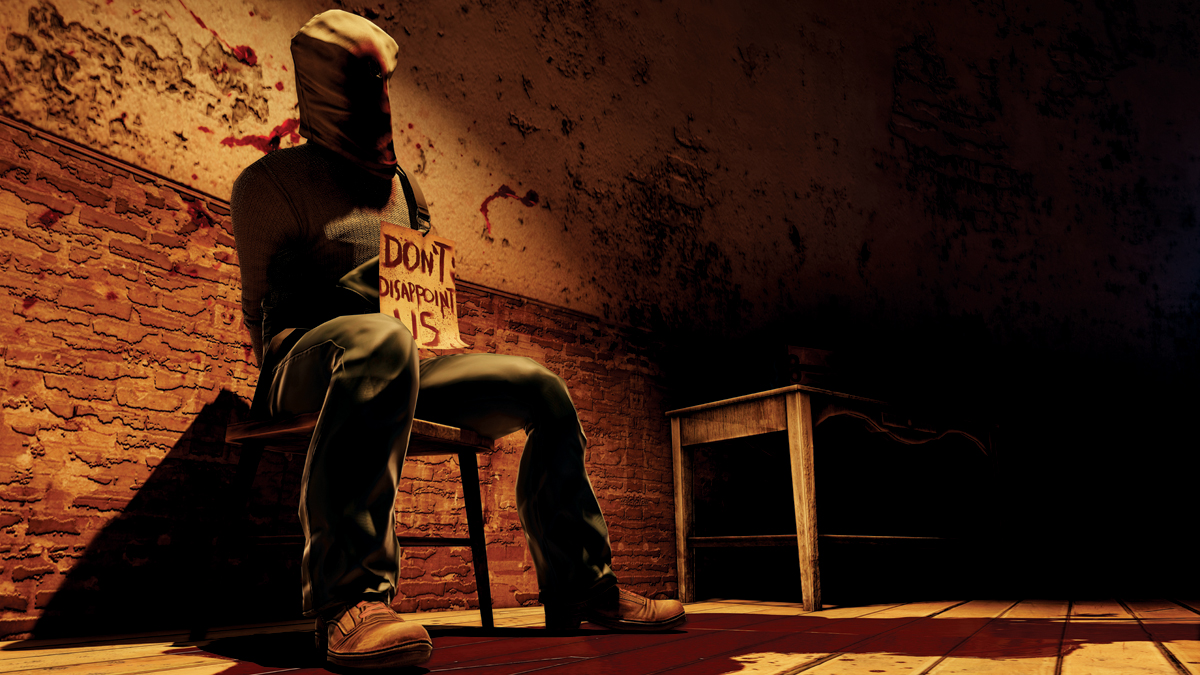Game Changer: Kevin Levine

Screengrab via Irrational Games
One of Looking Glass’s critical early successes was 1994’s System Shock, a space adventure with some artificial intelligence and computer hacking thrown in. It wasn’t a big seller, but critics loved its immersive environment. Though he didn’t work on System Shock, Levine sees it as hugely influential on his own games. Here was a game that could enmesh players in a plot, allow them to explore a 3-D world, and offer them choices that could shape the game’s outcome.
In 1997, Levine, Chey, and a third Looking Glass staffer, Rob Fermier, decided to start their own studio, Irrational Games. At its start, the business ran only on the thin drip of ambition. They were broke and worked out of Levine’s apartment. Concepts were shopped around and rejected. Success seemed like a long shot. “I thought I was going back to computer consulting,” Levine said. “I remember I said to myself: ‘This is the time when people give up. That has an effect of narrowing the field. If you stick it out, just by being stubborn, you’ll at least be there when the call comes.’”
They had left Looking Glass on good terms, and Neurath proposed that Irrational collaborate on a sequel to System Shock. Released in 1999, System Shock 2 wasn’t a great seller, either, but with an acclaimed title to its credit, Irrational slowly grew. Industry giant Take-Two Interactive bought Irrational in 2006, giving the studio a publisher that would fund even more elaborate games. The deal also made Levine a rich man. Take-Two committed to publishing the studio’s next title, and Levine began writing the game that would become BioShock.
At the same time, an argument was brewing in the industry about the extent to which video games could be considered art. In some ways, people had been asking this question from the beginning. As early as 1982, the gaming company Electronic Arts created a provocative ad that asked, “Can a Computer Make You Cry?” Finding the answer, the ad copy continued, would mean “transcending [the computer’s] present use as a facilitator of unimaginative tasks and a medium for blasting aliens.”
Blasting aliens, however, would remain popular. At its simplest, a first-person shooter like BioShock is not that far removed from the pattern set by old arcade games like Pac-Man: The player manipulates a character through a maze, gaining or losing prizes, fighting or evading enemies. At the end of the maze, the game—and its story—end.

Screengrab via Irrational Games
In 2005, the great film critic Roger Ebert, writing about a movie adaptation of the game Doom, made the offhand pronouncement that “As long as there is a great movie unseen or a great book unread, I will continue to be unable to find the time to play video games.” Gamers took note and fired back, launching one of the Internet’s more notable flame wars. By 2010 Ebert had refined his position: In an essay titled “Video Games Can Never Be Art,” he wrote, “One obvious difference between art and games is that you can win a game. It has rules, points, objectives, and an outcome.” A game without points and rules, he said, “ ceases to be a game and becomes a representation of a story, a novel, a play, dance, a film. Those are things you cannot win; you can only experience them.”
Whatever Ebert said, Levine had his artistic sights set high. To design BioShock, he was reaching back to literary classics such as Brave New World, Animal Farm, and Ayn Rand’s Anthem. He became fascinated with dystopias: the human desire for perfect social order, and the inevitable failure of those aims. “There are a lot of utopia-minded people,” he said. “The problem is you bring people to your utopia.”
Levine set BioShock in an undersea city, Rapture, where a capitalist named Andrew Ryan has welcomed the world’s elite to develop their ideas. A banner heralds Ryan’s views: “No Gods or Kings. Only Man.” The discovery of rare stem cells that can bestow special powers alters this micro society, an underclass grows, and conflict ignites. The player is Jack, who tries to escape a Rapture gone mad with war. The creative team built an art deco setting of dystopia and insanity, of metal under pressure, of echoing shrieks, with a finish that has become a classic. In particular, BioShock’s scenes with the Little Sisters—little girls cloned to be incubators for those precious stem cells—set gamers into a frenzy of moral scrutiny. Depending on how the player interacts with the Little Sisters, the game has two different endings. If you’ve spared them, the story ends with the girls saving your life. Together, you ascend to the world above, where you raise them as your loving daughters. If you’ve killed some of the Little Sisters, though, the story ends as you lose your sanity, take over the city, and prepare to destroy the world with nuclear missiles. (There’s a third ending for those who slaughter all the Little Sisters—it’s the same as the second ending, but with a more disapproving-sounding narrator.)
“Everyone’s reaction will be different,” wrote Wired’s Chris Kohler. “‘I don’t know about you, but I have turned into a flagrant murderer of Little Sisters,’ said a friend of mine as he was playing through the game last weekend. I’ll never look at him the same way again.”
Not everyone admired this innovation. One reviewer, Kieron Gillen of Eurogamer .net, called BioShock “a game that’s furious that it’s a video game,” writing, “The game was built up as posing challenging moral decisions and showing the consequences…. Is it acceptable to kill defenseless girls to stay alive, just because someone tells you to? BioShock says no. The answer’s just, ‘No.’ It’s not something with gray areas….Where others have teased the idea of good and evil options, pandering to your tastes, BioShock just glares at you. You killed some kids? What Kind of Person Are You?”
While marketing Infinite this past year, Levine appeared in every major gaming publication and at every convention, teasing audiences with clips and concept art and morsels of Infinite. His fans—almost 79,000 on Twitter—ate it up. They had been looking forward to this for the better part of a decade.
There had already been a follow-up to BioShock: the prosaically named BioShock 2, released in 2010, by another division of Take-Two. It was mostly a rehash of the original, and Levine had had nothing to do with it. Infinite was to be Levine’s true sequel.
Levine calls art a pressure cooker. Dozens of people worked on Infinite—artists, actors, composers, technical staff. Infinite’s story was so large that Levine spread the writing duties around. In the fall of 2013, when the game was supposed to be released, the company announced that its launch date would be pushed back months, and the press reported that four employees in creative roles had left Irrational before the product was completed. Fans worried that the project might be borked, but their fears were allayed when the game finally launched in March 2013.


